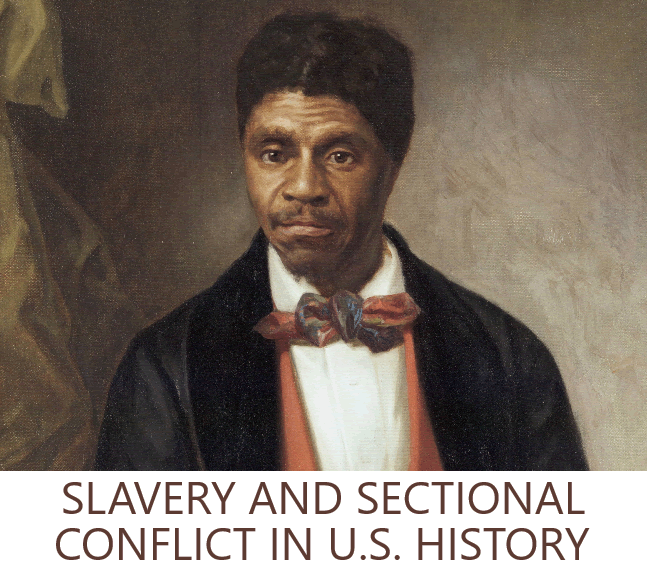Slavery and sectionalism were two interconnected and deeply divisive issues in the United States in the decades leading up to the U.S. Civil War. These issues created significant tensions between the Northern and Southern states and ultimately contributed to the outbreak of the Civil War in 1861.
 Slavery: Slavery:
- Expansion of Slavery: The institution of slavery had long been a part of the Southern economy and society. However, as the nation expanded westward through territorial acquisitions like the Louisiana Purchase and the Mexican Cession, debates arose over whether slavery would be allowed in these new territories.
- Missouri compromise (1820): To maintain a balance between slave and free states in Congress, the Missouri compromise was enacted. It admitted Missouri as a slave state and Maine as a free state, while drawing a line (the 36°30' parallel) above which slavery was prohibited in the Louisiana Territory.
- compromise of 1850: The compromise of 1850 addressed the status of newly acquired territories from the Mexican-American War. It included provisions like the Fugitive Slave Act, which required the return of escaped slaves to their owners, and allowed popular sovereignty (the right to decide on slavery) in some territories.
- Kansas-Nebraska Act (1854): This act repealed the Missouri compromise's restrictions and allowed the people in the Kansas and Nebraska territories to decide whether to allow slavery through popular sovereignty. This led to violent clashes between pro-slavery and anti-slavery settlers in "Bleeding Kansas."
- Dred Scott Decision (1857): In the Dred Scott v. Sandford case, the Supreme Court ruled that enslaved people, even if taken to free territories, were not entitled to their freedom and had no legal standing as citizens. This decision further inflamed tensions.
Sectionalism:
- Economic Differences: Sectionalism was exacerbated by economic differences between the North and the South. The North was increasingly industrialized and relied on wage labor, while the South's economy was primarily agrarian and dependent on enslaved labor.
- Cultural and Social Differences: The North and South also had differing cultural and social values. The North was more urban and had a growing middle class, while the South was characterized by a hierarchical society centered around the plantation system.
- Political Tensions: Sectionalism was reflected in the political arena, where disputes over issues like tariffs, internal improvements, and the extension of slavery into the territories divided Congress along sectional lines.
- Abolitionist Movement: The North saw the rise of the abolitionist movement, which called for the immediate end of slavery. Abolitionists used moral and religious arguments to condemn the institution of slavery and sought to influence public opinion.
- Formation of Political Parties: New political parties, like the Free Soil Party and the Republican Party, emerged in the North. These parties were opposed to the expansion of slavery into the territories and sought to limit its spread.
- Election of Abraham Lincoln (1860): The election of Abraham Lincoln, a Republican who opposed the extension of slavery but did not advocate for its immediate abolition, triggered a crisis in the South. Many Southern states saw Lincoln's election as a threat to their way of life and seceded from the Union.
The combination of the deeply rooted institution of slavery, the territorial and political disputes over its expansion, and the broader economic and cultural differences between the North and South created an atmosphere of tension and mistrust. These issues came to a head with the outbreak of the Civil War in 1861 when Confederate forces attacked Fort Sumter, South Carolina. The Civil War, which lasted from 1861 to 1865, was fought over these fundamental issues, ultimately resulting in the abolition of slavery and the preservation of the Union.
|
 Slavery:
Slavery:







